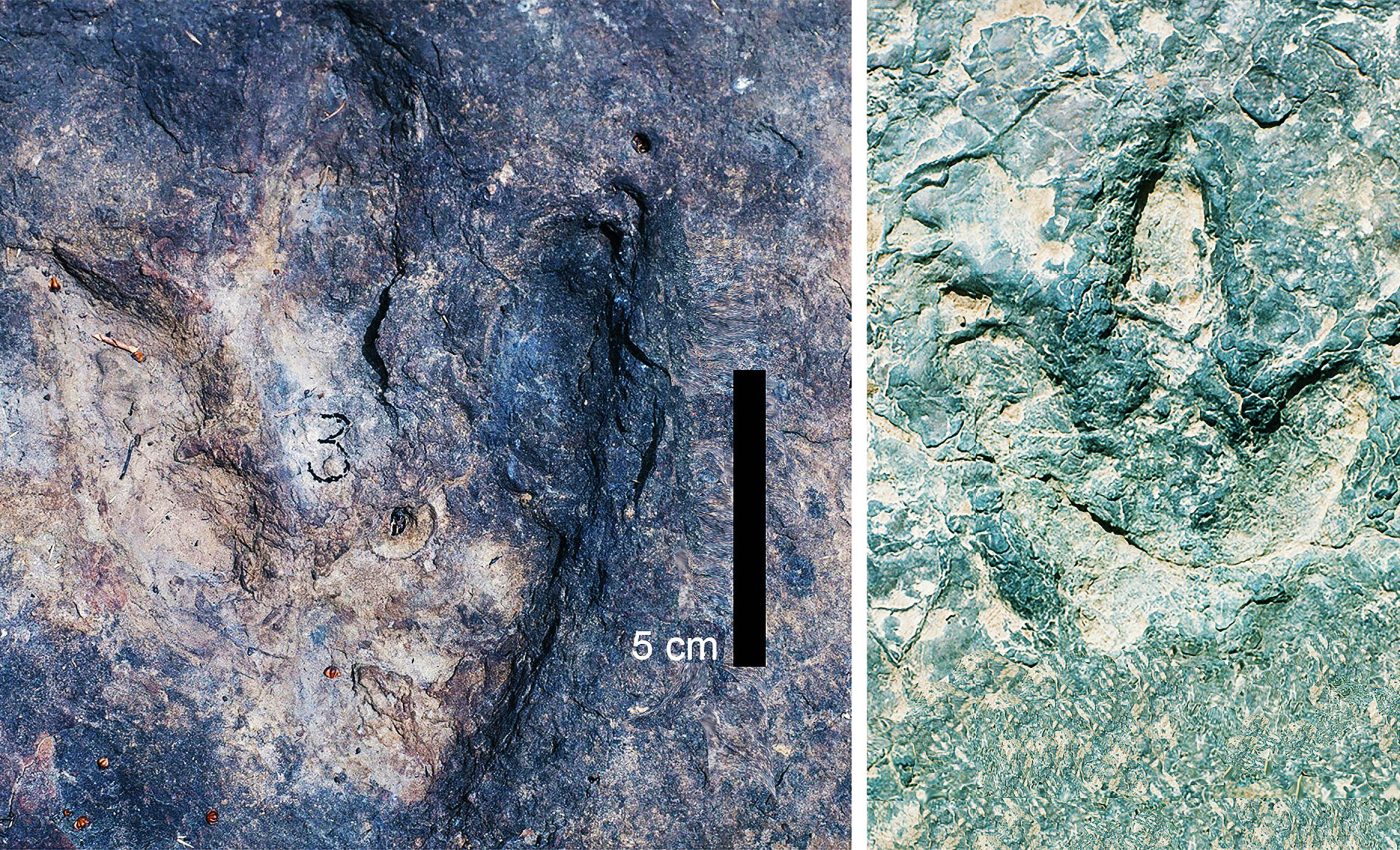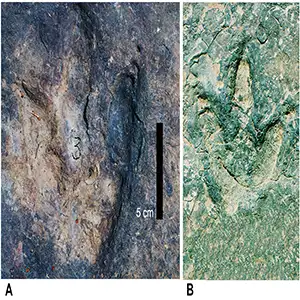
How did dinosaurs migrate to live in every part of the world? Scientists think they know
Somewhere in what is now northern Cameroon, a single stride pressed into wet river mud – three clawed toes, each the length of a hand. Minutes later, the water receded, silt drifted over the mark, and the print was saved for posterity.
Fast-forward 120 million years, and that fossilized step helps rewrite the map of an ancient world.
Back in the Early Cretaceous, Cameroon was stitched to the elbow of northeastern Brazil. There was no Atlantic Ocean, only a low, swampy plain linking the two landmasses.
Long-necked plant-eaters lumbered through reed beds, sharp-toothed hunters trailed them, and every footfall wrote a record in clay.
Dinosaur tracks pre-Atlantic Ocean
Geologists call that vanished landscape Gondwana, the southern supercontinent that had only recently split from Pangea.
Around 140 million years ago, tectonic forces tugged at its seams, opening rifts that would become the South Atlantic.
Even as magma welled up offshore, rivers still braided across the future ocean floor, allowing wildlife to wander freely between the continents.
Those paths are now exposed in two places more than 3,700 miles apart: the Koum Basin of Cameroon and the Borborema region of Brazil.

The connection comes into sharp relief thanks to a study led by paleontologist Louis L. Jacobs of Southern Methodist University (SMU).
His international team catalogued more than 260 dinosaur tracks in both basins across the Atlantic Ocean and showed that “in terms of age, these footprints were similar,” Jacobs said.
“In their geological and plate tectonic contexts, they were also similar. In terms of their shapes, they are almost identical.”
The twin sites, once side by side, preserve what researchers now call the Dinosaur Dispersal Corridor.
Stone tracks tell pre-Atlantic dinosaur tales
Most of the footprints belong to three-toed theropods, the fleet carnivores of their day. A handful of sauropod and ornithopod impressions round out the roster, hinting at herds of plant-eaters trudging through the same wetlands.
Sediments alongside the tracks contain pollen that also dates to about 120 million years ago, reinforcing the match between both sides of the Atlantic rift.
“One of the youngest and narrowest geological connections between Africa and South America was the elbow of northeastern Brazil nestled against what is now the coast of Cameroon along the Gulf of Guinea,” Jacobs explained.

“The two continents were continuous along that narrow stretch, so that animals on either side of that connection could potentially move across it.”
The footprints freeze that moment when the land bridge was still open yet fragile, a snapshot just before the continents drifted apart for good.
Life along the dispersal corridor
River valleys served as natural highways. Their floodplains offered water, sheltering vegetation, and soft ground ideal for capturing prints.
“Rivers flowed and lakes formed in the basins. Plants fed the herbivores and supported a food chain,” Jacobs continued.
“Muddy sediments left by the rivers and lakes contain dinosaur footprints, including those of meat-eaters, documenting that these river valleys could provide specific avenues for life to travel across the continents 120 million years ago.”

Borborema region of Brazil (left red star) and Northern Cameroon footprint-bearing localities (right red star). The Borborema/
Benin-Nigeria Structural Provinces can be imagined as an ovoid shape with the narrower
end just west of the left red star, and the wider end looped beyond the right red star. Click image to enlarge. Credit: SMU
With every rainy season, new tracks overlapped the old, building a layered story of migration.
Beyond tracks, bones tell of a thriving ecosystem.
Fossils from nearby basins include crocodilians, turtles, fish, and even early mammals such as Abelodon abeli, a curious tooth-shaped animal that hints at the deep roots of modern mammal lineages.
Each discovery fills gaps in the puzzle of how life adapted while the ground beneath it slowly tore apart.
Footprints meet fossils
The Koum and Babouri-Figuil basins are half-graben structures – troughs formed when crust stretches and drops along faults. Similar basins pepper both coasts of the South Atlantic, but few are as rich in terrestrial fossils.
That makes northern Cameroon a focal point for anyone tracing dinosaur journeys across Gondwana. The first finds came to light in the 1980s during the multinational PIRCAOC project, and newer digs still turn up surprise specimens despite the region’s remote location.
In Brazil, the matching tracks lie within red siltstones that once lined ancient lagoons. Their fine grain preserves claw imprints and skin traces in remarkable detail.
Together, the African and South American sites confirm that dinosaurs strolled across a contiguous landmass long after Pangea began unraveling, using the same river corridors that would later drown beneath the Atlantic.
Why these tracks matter today
Studying the dispersed footprints sharpens computer models that reconstruct continental drift, improving predictions of where oil, minerals, or groundwater might reside today.
They also highlight how living routes shift as climates and coastlines change, offering lessons for wildlife facing modern habitat fragmentation.

Visitors can now follow marked trails to view several of the Cameroonian prints, stepping where theropods once hunted. Local guides say the site feels like “a story written in stone.”
Dinosaur tracks reunited across the Atlantic
That story is still unfolding as researchers scan, map, and compare each trackway. Future excavations may uncover additional corridors, showing that prehistoric migration was as complex and wide-ranging as journeys undertaken by animals in the present day.
The tracks remind us that continents move at a snail’s pace, yet over millions of years that pace is enough to reshape oceans, climates, and the paths available to life.
By reading the mudstone diaries of Cameroon and Brazil, scientists glimpse how creatures responded to those changes – walking, feeding, and multiplying across a supercontinent that no longer exists, but whose memory endures beneath our feet.
The full study was published in print by New Mexico Museum of Natural History & Science
—–
Like what you read? Subscribe to our newsletter for engaging articles, exclusive content, and the latest updates.
Check us out on EarthSnap, a free app brought to you by Eric Ralls and Earth.com.
—–













